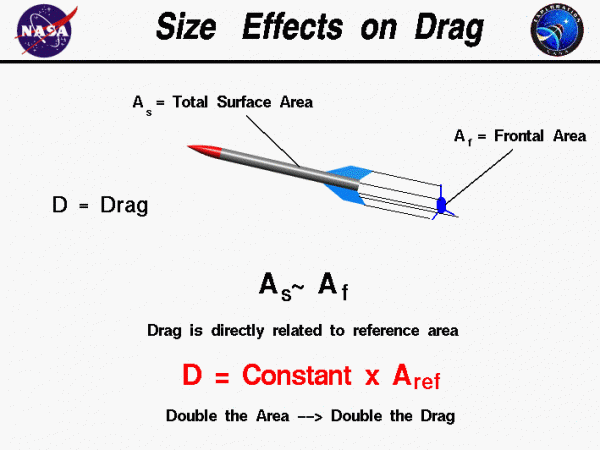Size Effects on Drag

Size Effects
The amount of drag generated by an object depends on the size of the object. Drag is an aerodynamic force and therefore depends on the pressure variation of the air around the body as it moves through the air. The total aerodynamic force is equal to the pressure times the surface area around the body. Drag is the component of this force along the flight direction. Like the other aerodynamic force, lift, the drag is directly proportional to the area of the object. Doubling the area doubles the drag.
\(\LARGE D=\text{Constant}\times A_{ref}\)
Reference Area
There are several different areas from which to choose when developing the reference area used in the drag equation. If we think of drag as being caused by friction between the air and the body, a logical choice would be the total surface area (As) of the body. If we think of drag as being a resistance to the flow, a more logical choice would be the frontal area (Af) of the body which is perpendicular to the flow direction. This is the area shown in blue on the figure. Each of the areas are proportional to the other areas, as designated by the “~” sign on the figure. Since the drag coefficient is determined experimentally, by measuring the drag and measuring the area and performing the necessary math to produce the coefficient, we are free to use any area which can be easily measured. If we choose the surface area, the computed coefficient has a different value than if we choose the cross-sectional area, but the drag is the same, and the coefficients are related by the ratio of the areas. In practice, drag coefficients are reported based on a wide variety of object areas. In the report, the test engineer must specify what area is used and when using the data the reader may have to convert the drag coefficient using the ratio of the areas.
\(\LARGE A_{s}\sim A_{f}\)
